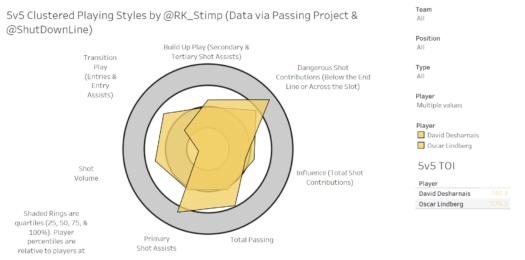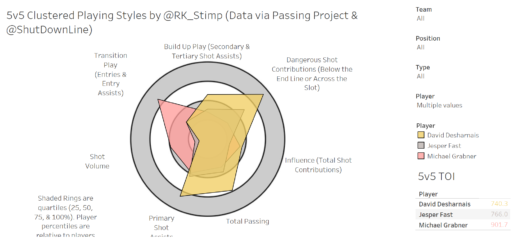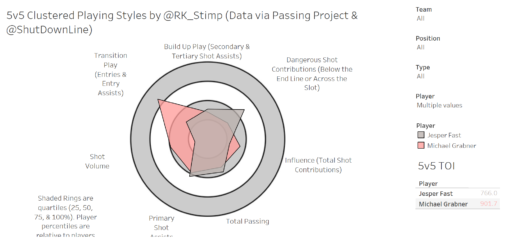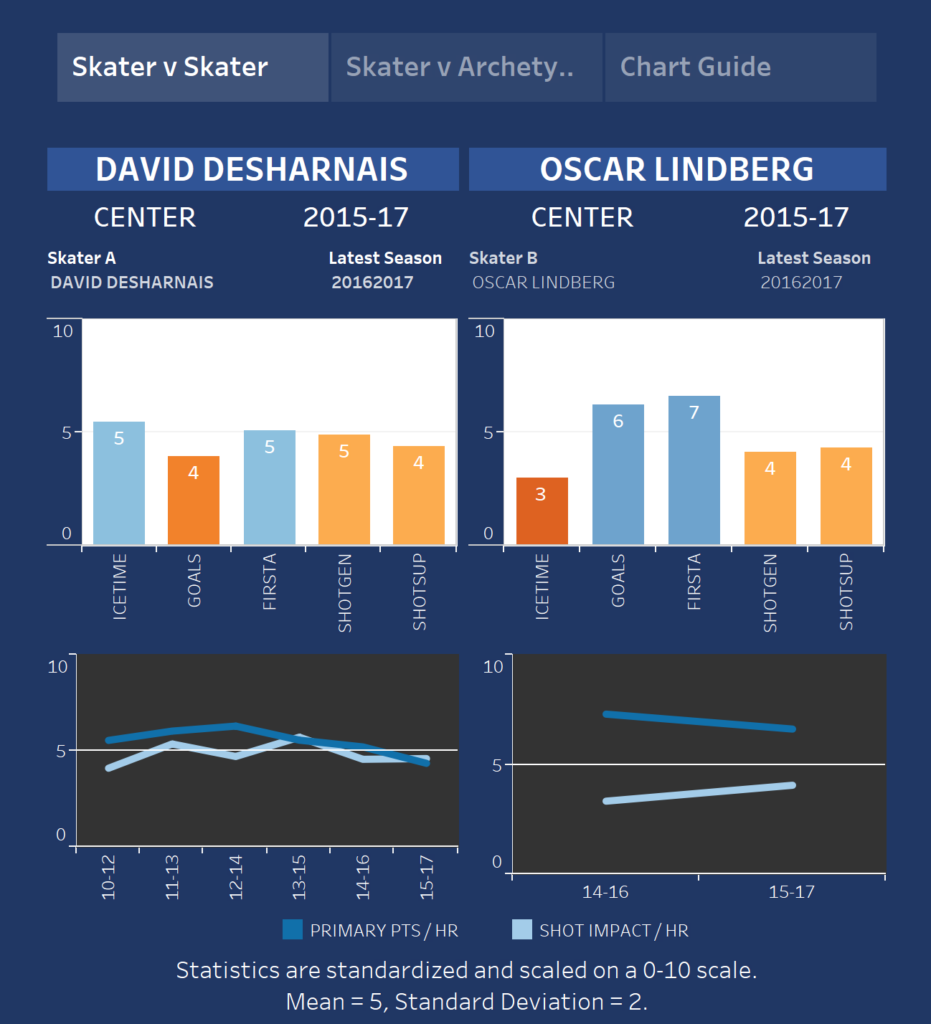The Rangers have had a pretty decent run of it so far in free agency, with Kevin Shattenkirk joining the Blueshirts and Brendan Smith re-upping for another four years. Aside from rebuilding just the defensive corps though, Jeff Gorton has begun reconstructing the Rangers’ center depth, after losing Oscar Lindberg to Vegas and trading away Derek Stepan.
Signing David Desharnais is a positive step in the right direction, and although finding a replacement for Stepan will be trickier, having Desharnais around will give the Rangers some options in the bottom six. I thought it’ be worthwhile however, to examine just exactly how Desharnais will replace Lindberg – if their playing styles are the same, how they stack up against one another, and how they complement their linemates.
To do this, I figured I’d consult Ryan Stimson’s Passing Project, which I’ve referenced on this blog before. Basically, Ryan and his cohorts have tracked hundreds of games, logging the passes each team makes before each shot is taken. While not quite every game has been tracked it is a ton of data, so any sample size is meaningful. Using this data Ryan put together circular charts representing what particular players excel at, and so using that I compared Lindberg and Desharnais to each other, and to their linemates.
To start, here’s Desharnais stacked up one on one against Lindberg. Lindberg being the more round shape in the center and DD being the more angular shape (I don’t know why they came out the same color, just coincidence I guess). We can see that although Lindberg may have been more well rounded, Desharnais has some particular talents that will serve the Rangers well.
While Lindberg beats Desharnais in shot volume and transition play, the ex-Canadien significantly outstrips the newly minted Vegas Golden Knight in terms of primary shot assists, dangerous shot contributions, and total passing.
This one compares Desharnais with his most likely linemates, Jesper Fast and Michael Grabner. It’s a little bit hard to see (click to enlarge), but Fast is the shape just inside in the yellow shape, which is Desharnais (Grabner is the pink pointy one). Basically, if you like Jesper Fast, you’re going to love Desharnais, who’s basically got the same style, except he’s better. Neither of them are particularly strong at transition play however, which is fine, because Grabner’s got that sewn up with his speed.
For reference, I’ve included just Fast and Grabner above.
Lastly, here’s what we’ll be leaving behind given Oscar’s unfortunate departure to Las Vegas. As mentioned earlier, Lindberg was fairly well rounded, and so the line may be missing a little je ne sais quoi, but given Desharnais’ total passing contributions and dangerous shot contributions, we may very well see some more exciting plays out of the fourth line this season, even if their overall shot volume is slightly weaker.
How do Desharnais and Lindberg stack up against each other in terms of raw numbers? Well, in 49 games DD had 12 points, for a P/60 of 1.30 while Lindberg put up 20 points in 65 games for a 1.77 P/60. It is worth nothing that both of them had relatively high shooting percentages, with Desharnais shooting at 13.33% and Lindberg coming in at 9.64.
Additionally, I’ve included a HERO chart comparing both Lindberg and Desharnais below that illustrates basically the same principle: Lidberg may be a little bit better at putting up points, but they’re roughly comparable otherwise.
Lindberg being a little bit better, we may see some drop off in terms of how well the fourth line performs, especially since Michael Grabner is unlikely to score 20+ goals again this year. Still, Desharnais is a competent, if different style center who can bring a different element to the bottom six that may ultimately adequately replace or even surpass what Lindberg was able to bring to the table.
Share:
More About:Players






